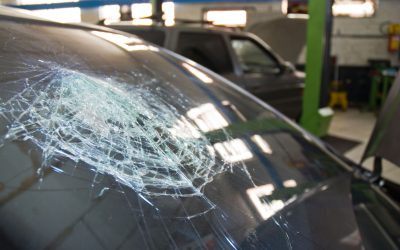When your vehicle starts making an unusual noise or a warning light appears, one of the first things that comes to mind is: “How much is this going to cost?” A visit to an auto shop usually results in an auto repair estimate, but the numbers can vary significantly from one shop to another. So what causes this variation?
If you’ve searched for auto repair near me and received different quotes for the same issue, you’re not alone.
The Key Components of an Auto Repair Estimate
An auto repair estimate typically includes a breakdown of three main categories: parts, labor, and additional services. Here’s how each one plays a role:
1. Parts and Materials
The cost of replacement parts can vary depending on whether the shop uses original equipment manufacturer (OEM) parts, aftermarket alternatives, or rebuilt components. OEM parts tend to be more expensive but may offer better compatibility and durability. On the other hand, aftermarket parts can lower the overall cost but vary in quality.
Additionally, vehicles with newer technology or imported models may require specialized parts, which can drive up prices. Fluids, filters, and other consumables are also factored into the materials portion of the estimate.
2. Labor Charges
Labor rates are typically billed by the hour and can differ based on location, technician certifications, and the complexity of the repair. For example, removing an engine component buried deep in the engine bay takes more time than replacing a battery or brake pads.
Most shops use industry-standard labor guides that provide average times for specific repairs. However, some vehicles are more labor-intensive due to tight spaces or advanced electronic systems, which can increase the total cost.
3. Diagnostic and Inspection Fees
Before performing repairs, technicians often spend time diagnosing the root cause of the issue. This process may involve running digital scans, conducting pressure tests, or removing components for inspection. These services are typically included as separate line items in your estimate.
Why Estimates Differ Between Shops
If you’ve requested estimates from multiple locations after searching for auto repair near me, you might notice that pricing varies. Here’s why:
1. Shop Type and Specialization
Independent repair shops, national chains, and dealerships often have different pricing models. A dealership may charge more for labor but offer brand-specific expertise. Meanwhile, an independent shop may provide more flexible options and aftermarket parts.
Shops that specialize in certain types of vehicles or repairs may also have premium rates due to their advanced diagnostic tools and training.
2. Diagnostic Accuracy
Some repair shops provide a detailed, itemized estimate based on in-depth diagnostics, while others may offer a ballpark figure based on symptoms. The more comprehensive the assessment, the more accurate—and potentially higher—the estimate may be.
A well-rounded diagnostic process, like the one provided by a trusted automotive repair shop, helps prevent surprises down the line and ensures you understand exactly what your vehicle needs.
3. Warranty and Quality Standards
Shops that offer extended warranties on parts and labor may charge slightly more upfront but provide long-term value. These added protections reflect confidence in workmanship and material quality.
Conversely, a lower estimate might not include warranty coverage, meaning you could end up paying more if the problem returns or worsens.
Location and Operating Costs
Another factor that affects repair costs is geography. Auto repair shops in metropolitan or high-rent areas often charge more than those in smaller towns due to higher overhead expenses. This is reflected in both labor rates and service fees.
Arizona drivers, for example, may see different pricing between cities like Phoenix and more rural areas. Environmental factors, such as heat and dust, can also influence maintenance frequency and repair needs, particularly for vehicles that operate in extreme climates.
How to Make Sense of Your Estimate
To confidently evaluate any auto repair estimate, keep the following in mind:
- Review line items carefully. Make sure each part and service is listed and explained.
- Ask about part options, including OEM vs. aftermarket.
- Confirm warranty coverage on both parts and labor.
- Compare estimates, but don’t automatically choose the lowest one—consider value, experience, and quality of service.
It’s also helpful to establish a long-term relationship with a reputable local shop that understands your vehicle’s history and your driving habits.
Final Thoughts: Don’t Let Confusion Delay Needed Repairs
Vehicle problems can’t always be avoided, but understanding what goes into an auto repair estimate can help you navigate the process with more confidence. Whether you’re dealing with a minor fix or a more involved service, taking the time to review your estimate thoroughly ensures you know exactly what you’re paying for—and why.
Suppose you’re in need of expert diagnostics, trustworthy guidance, and consistent service. In that case, working with a trusted automotive repair shop is the best way to protect your vehicle and your peace of mind.


